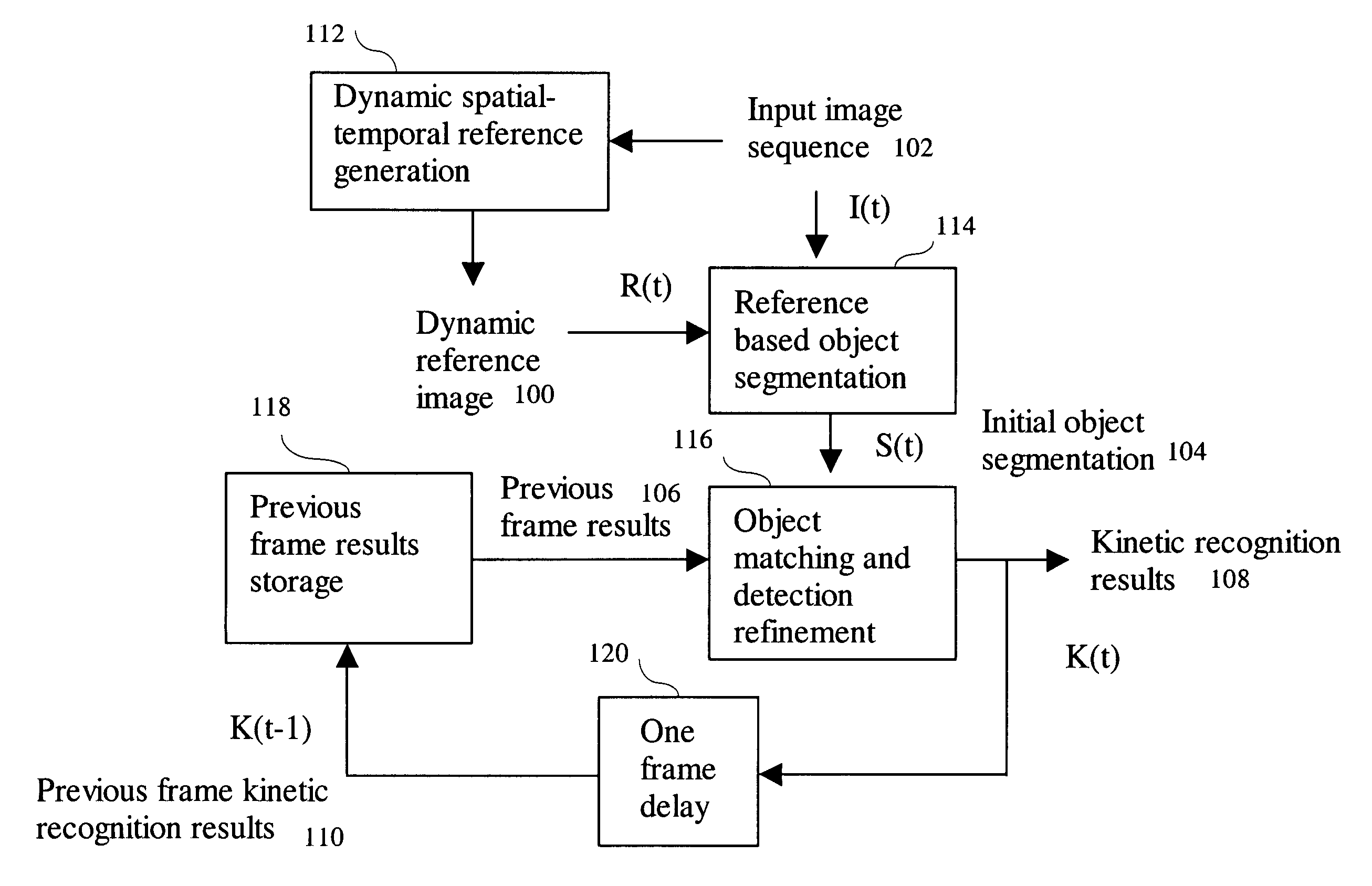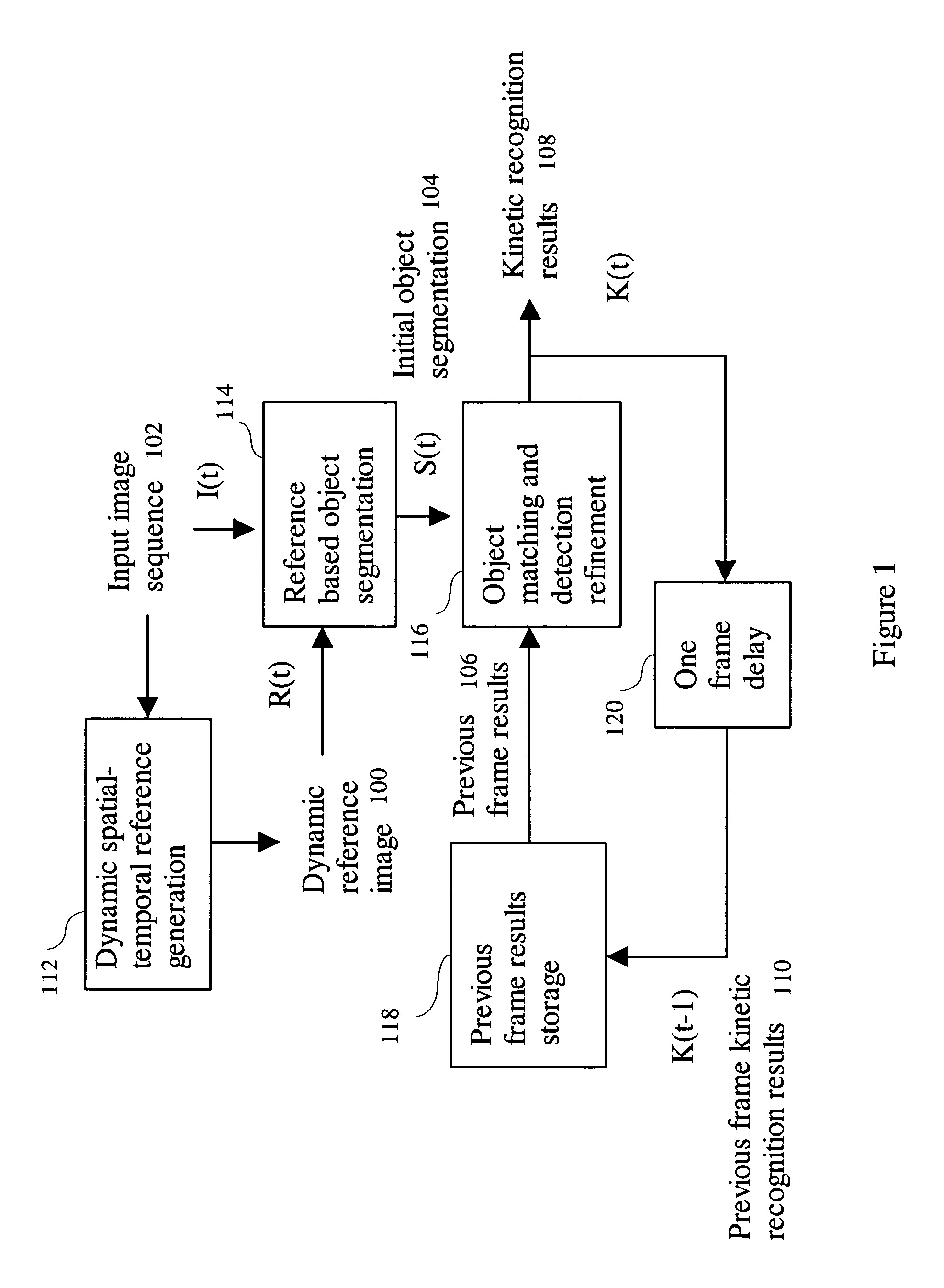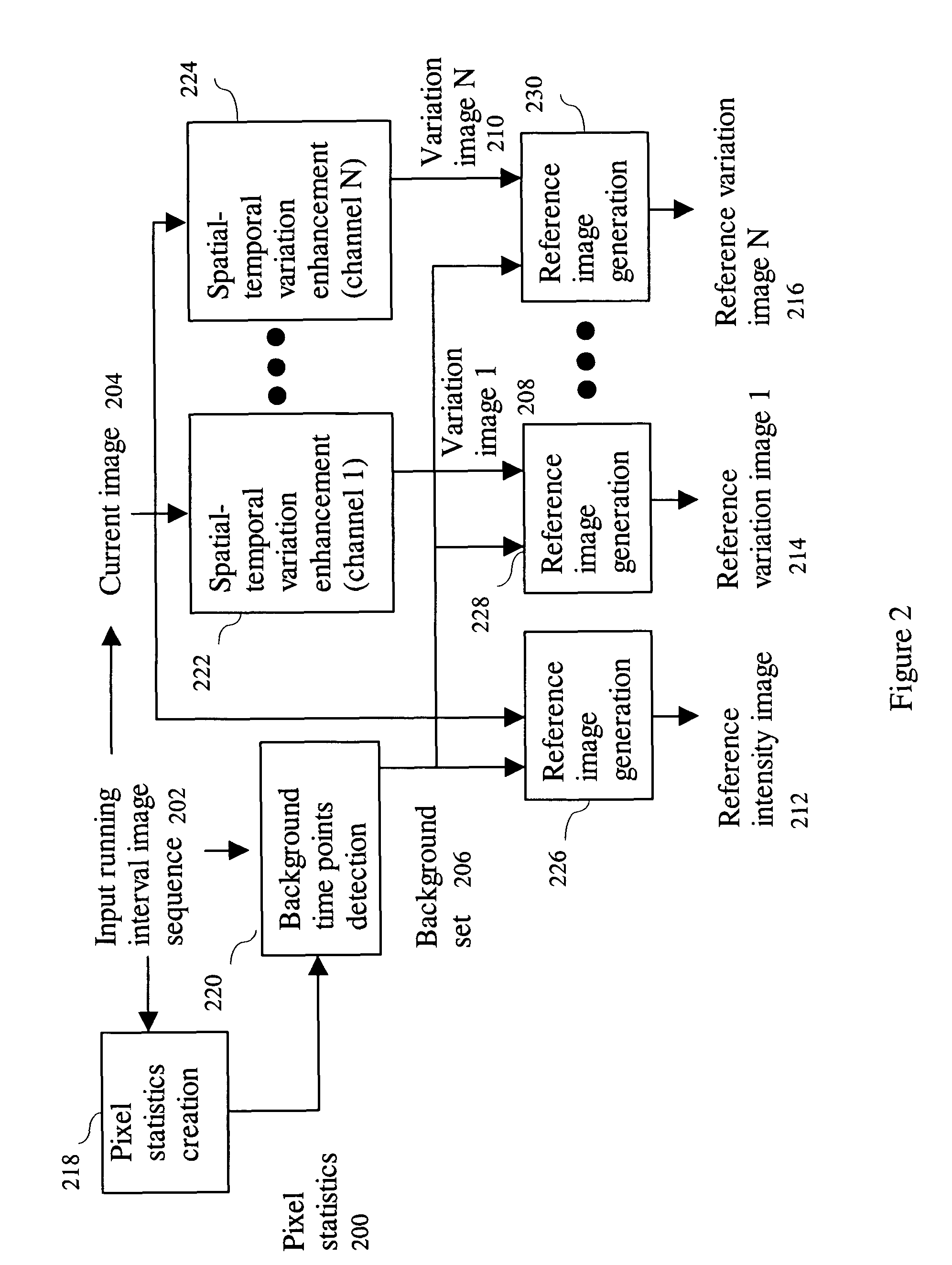Method for moving cell detection from temporal image sequence model estimation
a temporal image sequence and model estimation technology, applied in image enhancement, image analysis, instruments, etc., can solve the problems of prior art temporal differencing, optical flow methods are very sensitive to noise, and the dynamic modeling method is only suitable for man, so as to improve the sensitivity and specificity of moving object detection
- Summary
- Abstract
- Description
- Claims
- Application Information
AI Technical Summary
Problems solved by technology
Method used
Image
Examples
Embodiment Construction
I. Robust Kinetic Recognition Method Overview
[0019]This invention discloses a computerized robust cell kinetic recognition module that can accurately recognize and track a cell of the current frame (t) using both the current frame image and at least one previous frame (t−1), . . . , (t−k) recognition results. A key innovation of this invention is the creation of dynamic spatial-temporal referencing method implemented in a computer. The dynamic spatial-temporal referencing method generates reference images including not only reference background image but also reference variations images for the moving object detection. The moving object detection is then based on the reference subtraction approach. That is, a moving object is detected by subtracting the current frame from the reference images.
[0020]The method further includes object detection refinement using object tracking and adaptive integration as well as conflict resolution to resolve cells that are touching or stacking (overl...
PUM
 Login to View More
Login to View More Abstract
Description
Claims
Application Information
 Login to View More
Login to View More - R&D
- Intellectual Property
- Life Sciences
- Materials
- Tech Scout
- Unparalleled Data Quality
- Higher Quality Content
- 60% Fewer Hallucinations
Browse by: Latest US Patents, China's latest patents, Technical Efficacy Thesaurus, Application Domain, Technology Topic, Popular Technical Reports.
© 2025 PatSnap. All rights reserved.Legal|Privacy policy|Modern Slavery Act Transparency Statement|Sitemap|About US| Contact US: help@patsnap.com



